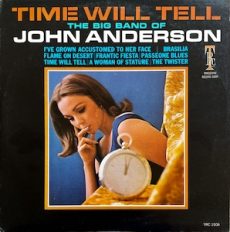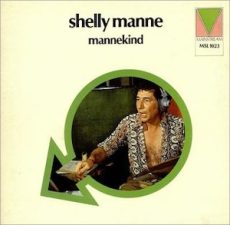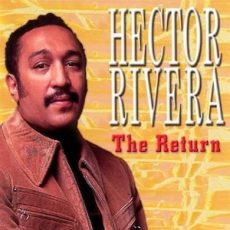
Daily Dose Of Jazz…
Mihály Tabányi was born on February 1, 1921 in Pilis, Hungary. He began his musical studies on the violin at the age of five , and then on the piano at the age of eight. From 1933, he studied accordion for seven years with Lajos Bobula, while attending the Academy of Music and graduating in organ and gordon due to no accordion department. He then became a church organist.
1940 saw Mihály winning first place in the first National Accordion Competition as a professional. Two years later he won the National Accordion King Competition and the Tango Accordion Olympics. He later made his first jazz recordings for the Radiola Electro Record label.
Before 1945, he mainly performed in trios and later with György Cziffra with whom he played in the Bristol Hall orchestra, before founding his own band called Pinocchio that included two guitarists, Elek Bacsik and Attila Zoller, with which he performed in many countries. After 1945, he expanded the trio to eight members. In 1946 he received a contract in Switzerland and two years later he founded his own accordion school. From 1949 he played with his band at the Emke Café for seven years before disbanding in 1956.
In 1950 he was awarded the title of the country’s most popular jazz musician. In 1957 he made the first Hungarian West Coast recording for the Qualiton label. From 1960 he spent years in West Germany and gave concerts in many European countries and made several large formation recordings. He worked with many singers that immortalized his playing on their records. In 2017, the National Accordionist Society established the Mihály Tabányi Award.
Accordionist Mihály Tabányi, who was an Emerton-award winner and the most popular accordionist of the Forties and Fifties, died on July 2, 2019 at the age of 98.
More Posts: accordion,bandleader,history,instrumental,jazz,music

Daily Dose Of Jazz…
John Anderson was born January 31, 1921 in Birmingham, Alabama. He studied at the Los Angeles Conservatory of Music and the Westlake College of Music.
He was a part of the West Coast jazz scene with Stan Kenton and others. He went on to work with Tiny Bradshaw, Jerry Fielding, Perez Prado, Earl Bostic, Charles Mingus, Buddy Collette, Curtis Counce, Britt Woodman, Count Basie, Chico Hamilton, J. W. Alexander, Dee Williams & The California Playboys, and Sam Cooke and many others.
During his career he performed with his own orchestra as well as many others like Georgie Auld And His Orchestra, Jack Costanzo & His Afro Cuban Band and Orchestra, Johnny Mandel Orchestra, and Russell Jacquet And His All Stars.
Trumpeter and composer John Anderson died in Birmingham on August 18, 1974.
More Posts: bandleader,composer,history,instrumental,jazz,music,trumpet

Daily Dose Of Jazz…
Jeffry Castleman was born January 27, 1946 in Los Angeles, California. Active from the late 1960s to 1980s and was known for his work with Duke Ellington between 1967 to 1969. He also worked with Frank Sinatra, Bob Hope, Johnny Hodges and toured with Don Ho.
In the late 1980s he relocated to Brooklyn Park Minnesota to run the family liquor store business. For a short time he was an art framer before taking aposition as a piano salesman at Schmitt Music in Minnetonka, Minnesota.
Leaving all forms of employment, bassist Jeff Castleman is now retired at 79.
More Posts: bass,history,instrumental,jazz,music

Daily Dose Of Jazz…
Hector Rivera was born on January 26, 1933 in New York, New York. He had been playing for over a decade, beginning in the early 1950s when he joined the band of Elmo Garcia as a teenager. Making his recorded debut as a bandleader in 1957 when Garcia didn’t have enough material prepared, Mercury Records asked if he had any music. Wanting to record a solo album Mercury offered to record him as a solo artist, issuing his debut, Let’s Cha Cha Cha.
Over the next few years, Rivera would be known mostly as a sideman to bandleaders Joe Cuba, Pacheco, and vocalist Vincento Valdez. He made his biggest splash as a bandleader with the 1966 album At the Party, with a large band featuring several trumpet players and percussionists, as well as bassist Cachao.
Dividing his approach between instrumentals and vocals, he employed several singers, including David Coleman who is most heard on the At the Party album. The success of the title cut enabled Hector to cut several more albums, along with continuing to write and arrange. He would go on to participate in projects for Ray Barretto, Machito, and Tito Puente among others.
Pianist, arranger, composer, bandleader and producer Hector Rivera who was one of the more renowned performers of the Latin soul genre, died on January 8, 2006 in his hometown.
More Posts: arranger,bandleader,composer,history,instrumental,jazz,keyboard,music,piano

Daily Dose Of Jazz…
Wellman Braud was born on January 25, 1891 in St. James Parish, Louisiana and settled in New Orleans, Louisiana. In his early teens he was playing the violin and the upright bass and leading a trio in venues in the Storyville District before 1910.
Moving to Chicago, Illinois in 1917 by 1923 he was performing in London, England with the Plantation Orchestra, doubling on bass and trombone. His next move was to New York City, where he played with Wilber Sweatman’s band before joining Duke Ellington.
Braud was the first to utilize the walking bass style that has been a mainstay in modern jazz. His vigorous melodic bass playing, alternately plucking, slapping, and bowing, was an important feature of the early Ellington Orchestra in the 1920s and 1930s. In 1936 he co-managed a short-lived Harlem club with Jimmie Noone, and recorded with the group Spirits of Rhythm from 1935 to 1937.
He would go on to play with the bands of Kaiser Marshall, Hot Lips Page, and Sidney Bechet and returned for a while to Ellington in 1944. In 1956 Wellman joined the Kid Ory Band and in the late 1950s, he joined the Barbara Dane Trio. Doing so he turned down opportunities to return to Duke Ellington’s band and tour with Louis Armstrong.
Upright bassist Wellman Braud, who is a distant relative of the Marsalis brothers on their mother’s side, died on October 29, 1966 in Los Angeles, California, at the age of 76.
Duke Ellington postumously paid tribute to Braud, with the composition Portrait of Wellman Braud on his 1970 album New Orleans Suite.
More Posts: bass,history,instrumental,jazz,music



